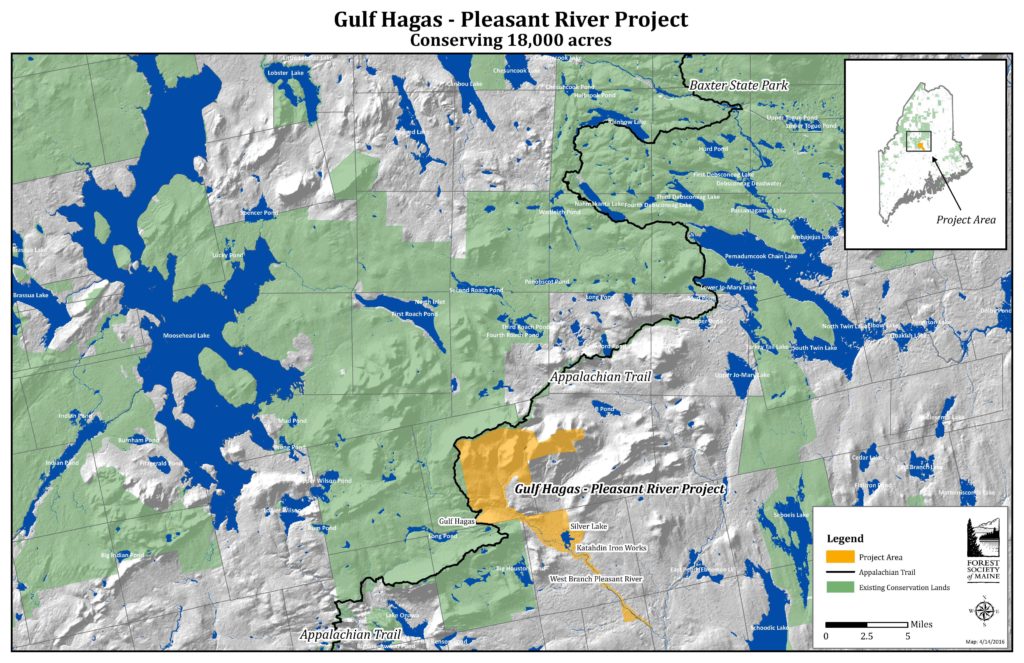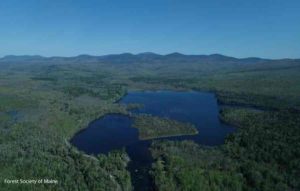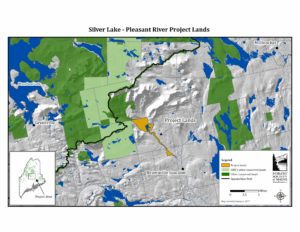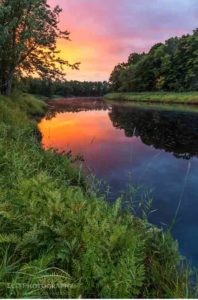
Adapted from FSM’s Fall 2016 Newsletter, Forest View
For this article Anna Schwarcz spoke with Dan Legere, Registered Maine Guide and 2015 recipient of the Wiggie Robinson Legendary Maine Guide Award. He and his wife Penny own Maine Guide Fly Shop in Greenville, ME.
One sunny day years ago, Dan Legere was standing on the bank of his favorite fishing spot with a representative from a conservation group. Sunlight sparkled off the rushing water and it was quiet, aside from the sound of the tumbling river. Standing there, the gentleman turned to Dan and asked, “If you could wish for anything, what would it be?” Dan replied, “My greatest wish would be that this place would stay the same forever.”
A Registered Maine Guide, Dan has been guiding fishermen on Maine’s waters for nearly 30 years. After graduating college he became a guide at a sporting camp and soon after began a fly-tying business. His business flourished, but his dream was to have his own shop. Having visited Greenville to peddle flies at sporting camps he realized there wasn’t a store catering specifically to fishermen. He purchased a building in Greenville 35 years ago, setting up Maine Guide Fly Shop, which he still runs with his wife Penny. The business became the go-to place for visitors looking to hire local fishing guides. Clients stock up on flies then head out on their own or with guides to the scenic, trout and salmon-filled waters of the Moosehead Lake region. One reason the area has been so popular is because secluded, undeveloped fishing spots are plentiful and accessible here, unlike most other places they have fished.

Most of the forestland Dan and his guides relied on was owned by paper companies like Great Northern Paper. He knew having access to the land was a unique privilege, but in the ‘90s when companies began selling their land he realized the privilege might not last. Maine has a longstanding tradition of landowners allowing public use of private property, but some prospective buyers were not so keen on this tradition of sharing. While talking about using these forested lands, he paused to consider that having public access was something he doesn’t take for granted but didn’t always give a lot of thought. “When you’re out there every day,” he said, “you just get the feeling it’s never going to change.”
In response to changes in forestland ownership that were occurring, FSM and other groups, (with support from the local community and its leaders, like Dan), began working with willing landowners to develop conservation options. As a result hundreds of thousands of acres of land around Moosehead Lake have been conserved in the past two decades—resulting in permanent public access and helping to sustain the livelihoods of many, like Registered Maine Guides, who depend on these woods and waters.
As Dan reflected on this he realized that although it didn’t happen instantly, the good news was that he got his wish—his favorite fishing spot was conserved along with tens of thousands of acres of forestland and miles of shoreline around remote lakes and ponds. He thanks the Forest Society of Maine and others who worked to conserve these forestlands because their future is no longer uncertain and they will remain much as they are today.
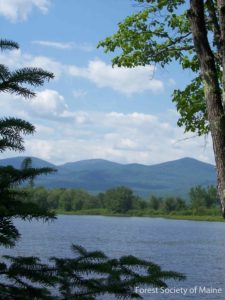
 The lands in the Gulf Hagas – Pleasant River project contain a unique concentration of North Woods and Appalachian Trail related recreational infrastructure and opportunities. Their permanent conservation is integral to ensuring the future of this nationally and regionally significant recreational area, which includes: the Appalachian Trail, Gulf Hagas, the Hermitage, the 100-Mile Wilderness, the Katahdin Iron Works/Jo Mary Forest, and Moosehead Lake. The project lands contain the trailhead and parking area for Gulf Hagas—a highly popular recreational destination—and they provide scenic views for people from all over the U.S. and the world who hike this portion of the Appalachian Trail each year.
The lands in the Gulf Hagas – Pleasant River project contain a unique concentration of North Woods and Appalachian Trail related recreational infrastructure and opportunities. Their permanent conservation is integral to ensuring the future of this nationally and regionally significant recreational area, which includes: the Appalachian Trail, Gulf Hagas, the Hermitage, the 100-Mile Wilderness, the Katahdin Iron Works/Jo Mary Forest, and Moosehead Lake. The project lands contain the trailhead and parking area for Gulf Hagas—a highly popular recreational destination—and they provide scenic views for people from all over the U.S. and the world who hike this portion of the Appalachian Trail each year.